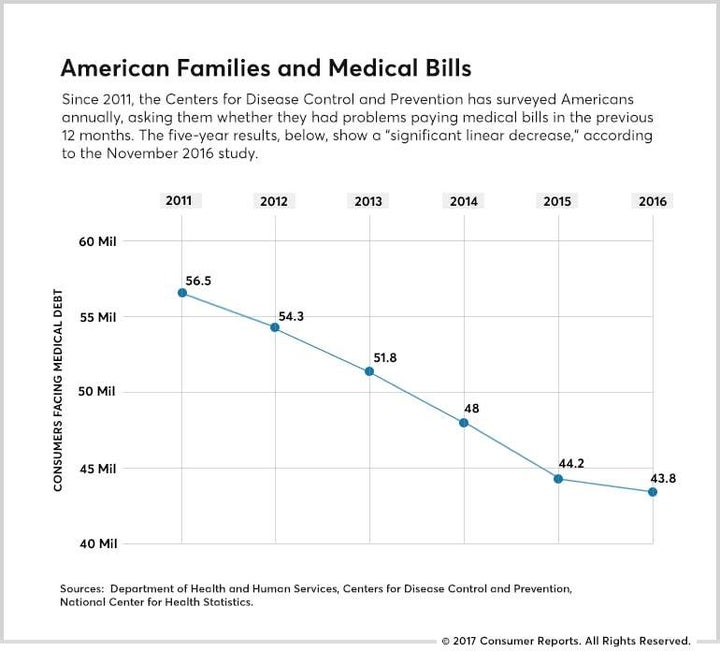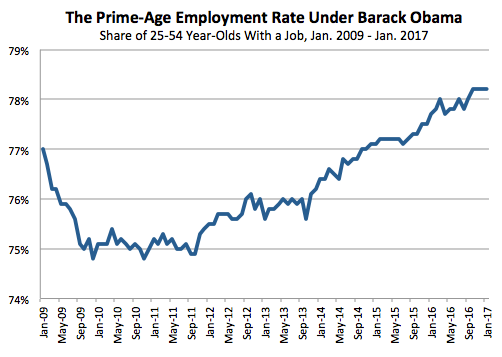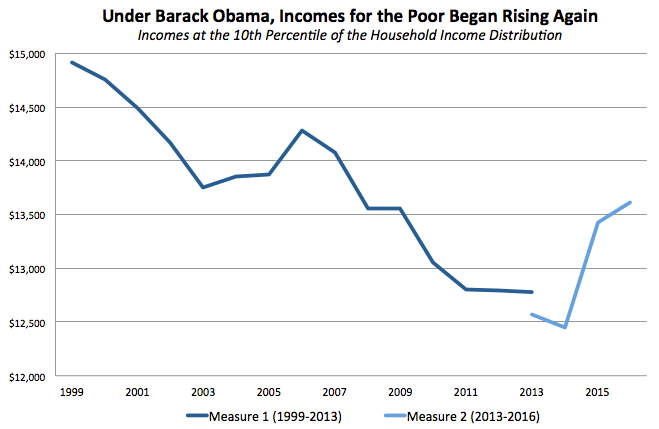Two weeks ago, liberal activist Naomi Klein tweeted: “If you are a prominent political commentator and you seriously don't know what a neoliberal is at the ass-end of 2017, then chances are, you are one.”
In response, the also-liberal opinion columnist Jonathan Chait wrote: “It's an epithet for ‘liberal’ used by socialists.” He then linked to a New York Magazine article of his titled How ‘Neoliberalism’ Became the Left’s Favorite Insult of Liberals. In the piece, Chait argues that “neoliberalism” has become a vapid invective deployed by the far left against the center-left. He notes that since nobody actually self-identifies as a “neoliberal” and since users of the term apply it to people with broadly different beliefs (Paul Ryan and Barack Obama have both been described as “neoliberals”), the term’s usage has left it largely devoid of meaning.
Chait’s initial tweet received nearly 400 replies on Twitter, some of which can be seen below (these are representative of the general response to Chait):
In replying like this, the far left basically made Chait’s point for him. Chait was arguing that the term “neoliberal” was an undefined, broad-brush epithet that didn’t correspond with any specific policy positions. The people responding to Chait used insults and epithets; expressed dogmatic outrage rather than tangible beliefs about policy; and (most notably) failed to ever actually define the word “neoliberal”.
Given the diverse cast of public figures who have been called “neoliberals,” it’s hard to figure out what sort of policy platform a neoliberal political party would endorse. People who have been described as “neoliberal” include Paul Krugman, Christina Romer (a famous Keynesian economist), Alan Krueger (a labor economist whose work is cited mostly by liberals), Joseph Stiglitz, Ta-Nehisi Coates, Barack Obama (see here, here, here, and here), Joe Biden, Jimmy Carter, Bill Clinton, Justin Trudeau, Angela Merkel, Emmanuel Macron, Margaret Thatcher, John McCain, George W. Bush, Ronald Reagan, Paul Ryan, Donald Trump, and the Koch brothers. These people disagree on just about every single major policy issue, including tax reform, climate change, energy policy, immigration, fiscal stimulus, Federal Reserve appointments, the minimum wage, healthcare, labor unions, regulation of Wall Street, Social Security, unemployment insurance, paid leave, income inequality, voting rights, race relations, LGBTQ equality, crime & policing, guns, abortion, and education.
Barack Obama’s inclusion on the above list is especially odd. Insofar as the term “neoliberal” is ever employed in public debate, the people using it are always socialists, communists, Marxists, or persons of a similarly leftist persuasion. They portray themselves as champions of the poor and argue that the only way to help vulnerable Americans is by enlarging the state’s role in the economy. According to this framing, the fall of capitalism is not the end goal, but rather the means to an end – with that end being “helping the poor”.
Given that framing, the far left’s decision to classify Obama as one of their neoliberal enemies is incredibly perplexing. While writers at Counterpunch, Truthout, Jacobin, Truthdig, Vice, and Salon were busy writing articles denouncing Obama as a “neoliberal,” Obama himself was enacting the most pro-working-class economic policy agenda of the past fifty years. On just about every major issue affecting inequality, Obama ratified a series of deep, pragmatic reforms that greatly assisted lower- and middle-income Americans (this list is by no means comprehensive):
Tax Policy: increased the Earned Income Tax Credit for working families with three or more children; extended the Child Tax Credit to all families making $3,000 or more per year (previously families had to make $12,550 or more to qualify); created a new Making Work Pay tax credit granting “up to $400 for working individuals and up to $800 for married taxpayers” in 2009 and 2010; cut the employee Social Security payroll tax, which falls mostly on low-wage workers, from 6.2% to 4.2% in 2011 and 2012; increased the top marginal income tax rate on the nation’s richest citizens from 35% to 39.6%; instituted a new 0.9% payroll tax on annual wage income above $200,000 for individuals and $250,000 for couples; created a new 3.8% tax on investment income, which mostly goes to the wealthiest Americans; and increased federal aid to state and local governments, thereby raising a greater share of total tax revenue at the federal level. (State and local taxes fall mostly on lower-income taxpayers, while federal taxes fall predominantly on the rich, so having the federal government raise a greater share of total revenue is effectively a redistribution of income from the rich to the poor.) (See Figure 2 on page 32 of this Congressional Budget Office report for a look at the increase in federal taxes on the rich.)
Regulation of the financial sector: created the Consumer Financial Protection Bureau (CFPB) to help ordinary Americans who are scammed by powerful financial institutions; created a new “SIFI” (Systemically Important Financial Institution) classification which subjects institutions acting like banks to bank-like regulations; replaced bank bailouts with temporary nationalizations, meaning that bank CEOs and shareholders (not taxpayers) will be the first people to lose money whenever their banks go under; enacted a “fiduciary rule” which mandates that financial advisors must act in their customers’ interests rather than in their own interests; and reigned in credit card abuse.
Minimum wage: raised the minimum wage that federal contractors can pay their workers from $7.25 to $10.10 an hour; called on states and localities to raise their own area-specific minimum wages, which may have played a role in the large number of state-level minimum wage hikes over the past few years.
Support for labor unions: appointed pro-union officials to the National Labor Relations Board, which ruled in 2015 that unions now have the right to bargain with the larger franchise (rather than the specific franchisee) for which their members work.
Access to higher education: removed banks as the middle men on federal student loans, thereby significantly decreasing the interest rates that students have to pay; increased Pell Grant funding by billions, allowing an additional three million lower-income students to either attend college or (if they would’ve attended college anyway) get through college more easily (Grunwald, Michael, The New New Deal, page 444).
Full employment (reducing joblessness): signed into law the largest stimulus bill in American history (Obama’s stimulus was larger than spending on all pre-WWII New Deal programs combined, even after adjusting for the different sizes of the economy in those two periods); rescued the American auto industry, saving millions of manufacturing jobs in the Midwest; and appointed Ben Bernanke and then Janet Yellen to head the Federal Reserve. Bernanke and Yellen pursued more creative monetary stimulus programs than central bankers in other countries, pushing short-term interest rates down to nearly zero percent and enacting creative new “quantitative easing” programs to reduce long-term interest rates.
Healthcare: reintroduced the Children’s Health Insurance Program (CHIP), a system that provides free healthcare to children of low-income families and had seen its funding lapse under President Bush; extended health insurance coverage to previously uninsured Americans by expanding Medicaid and providing subsidies to low-income people to buy plans on the insurance exchanges created by the Affordable Care Act (ACA); and reigned in the previously-exploding costs of healthcare with a cadre of small reforms aimed at getting doctors to provide patients with high-quality medical care rather than just a large quantity of care.
And this list doesn’t even include the more obvious ways in which the Obama administration helped struggling Americans through the Great Recession, for example by increasing the duration of unemployment benefits.
The results of these policies are plainly visible in the lives of America’s most disadvantaged citizens. Virtually every measure of economic hardship fell precipitously during the Obama years, with many of the declines coming as a direct result of Obama’s policies.
Start with bankruptcies. Before Obama got into office, medical bills were one of the leading causes of bankruptcy in the United States. Moreover, while the uninsured were disproportionately likely to file for bankruptcy, most of the people going bankrupt actually had insurance – but insurance companies could drop people’s coverage once they got sick through maneuvers known as “rescissions”. When Obamacare banned rescissions, prevented insurance companies from charging sick people exorbitant premiums, and then (in 2014) expanded health insurance coverage, the effect on bankruptcy filings was palpable. During Obama’s time in office, personal bankruptcies fell by nearly half:

Even between just 2011 and 2016, the number of Americans who reported facing financial hardship due to high medical bills fell by about 13 million:

How about a second measure of economic deprivation – joblessness? Here Obama also has a strong, albeit imperfect, record. The unemployment rate overstates Obama’s performance because many long-term unemployed workers became so discouraged with their job prospects that they dropped out of the labor force entirely, causing the unemployment rate to fall for all the wrong reasons. A more honest measure is the prime-age employment rate, or the share of 25-54 year-olds with a job. Employment was falling when Obama entered office in the middle of the Great Recession, but began turning around in late 2011; by the time he left office in January 2017, employment was higher than when he was inaugurated:

Now, there is some question as to whether employment should’ve risen even more during Obama’s time in office; that question is somewhat hard to adjudicate, since it depends on what people view as a fair standard for job growth. Even today, the labor market isn’t fully recovered from the Great Recession (the prime-age employment rate was 79.9% in 2007), but that’s pretty typical of recoveries from financial crises; by some measures, the U.S. has actually had the best recovery of any country that experienced a financial crisis in the late 2000s. Americans are right to feel bad about the slow pace of the economy’s recovery, but it’s hard to pin much of that blame on Barack Obama.
The most extremely marginalized Americans received even greater help from President Obama. During the Great Depression – the only comparable economic crisis of the past hundred years – there was a tremendous spike in homelessness, with many of the homeless setting up shantytowns and encampments that came to be known as “Hoovervilles”. The 2007-2009 recession, like the Great Depression, was precipitated by a financial crisis. But while the Great Depression was worse in scale, the most recent crisis had its roots in a bloated housing bubble whose crash should’ve pushed hundreds of thousands of people onto the street. Instead, homelessness actually fell due to an innovative new program created in the 2009 stimulus bill. As Michael Grunwald noted in Foreign Policy:
Homelessness actually declined slightly, largely because an innovative Recovery Act experiment in ‘homelessness prevention’ helped house 1.2 million Americans in crisis. If half of them had ended up on the streets instead, the country’s homeless population would have doubled.
This was a tremendous achievement by the Obama administration that largely went unnoticed by the media – after all, the lack of a crisis never generates headlines.
The end of the Obama era also saw the reversal of the long-term decline in incomes for the poor. The figure below shows the inflation-adjusted income level at the 10th percentile of the household income distribution (that is, households that are poorer than 90% of the population) from 1999 to 2016. During Obama’s last two years in office, these households saw a 9.3% increase in income, enough to offset all of the losses from the Great Recession and reverse half of the decline from the previous 15 years:

And finally, there is Obama’s most obvious accomplishment of all – the decline in the number of Americans without health insurance. The figure below (from the Census Bureau) shows the precipitous decline in the uninsured rate during Obama’s presidency. The only historically similar decrease in U.S. history is the creation of Medicare and Medicaid in the 1960s.

Remember: the ostensible goal of people throwing around the term “neoliberal” is to help poor Americans experiencing serious economic hardship. Obama did this to an exceptional degree; however, to the chagrin of socialists, communists, and Marxists everywhere, he did it without ever endorsing the Leftist policy agenda. During Obama’s time in office, there were remarkable declines in homelessness, joblessness, personal bankruptcies, and the number of Americans lacking health insurance; at the same time, the incomes of the poor finally began rising again. Obama did this by supporting stronger labor unions and higher minimum wages, making college more affordable for the poor, housing the homeless, pursuing both fiscal and monetary stimulus, cutting taxes for lower- and middle-income Americans, raising taxes on the rich, imposing new regulations on Wall Street, and extending affordable health insurance coverage to millions of the uninsured. However, he eschewed the much harder Leftist work of posting defiant tweets and shouting loudly on amateur podcasts. Classic neoliberal right there.
The far left’s derision of Obama as a “neoliberal” shows that the insult isn’t being used to describe concrete policy ideas or specific economic theories. I majored in economics at Wesleyan University and never once heard any of my professors or fellow econ students use that word. I only heard it for the first time when a few students majoring in CSS – a specific Wesleyan program that combined philosophy, history, government, and a hazy study of economics (the program dealt more with broad economic philosophies than with economic models) – had a long conversation about how Obama was a “neoliberal shill.” Needless to say, there was not a single mention of any specific issue that Obama had handled poorly – rather, there was just continual usage of the phrases “neoliberalism,” “economic paradigm,” “the capitalist system,” etc. The term was also used by sociology majors, Woke hipsters, and stoic Facebook warriors. As I said, the word never made its way into my economics courses – but it has received plenty of fervent denunciation from liberal poets.
At this point, you may be wondering: are you a neoliberal? Based on the word’s imprecise usage, it’s not really clear. What is clear, however, is that you are a neopaleoanarconservatist.
Don’t know what that word means? That’s because you are one, you damn neopaleoanarconservatist.
